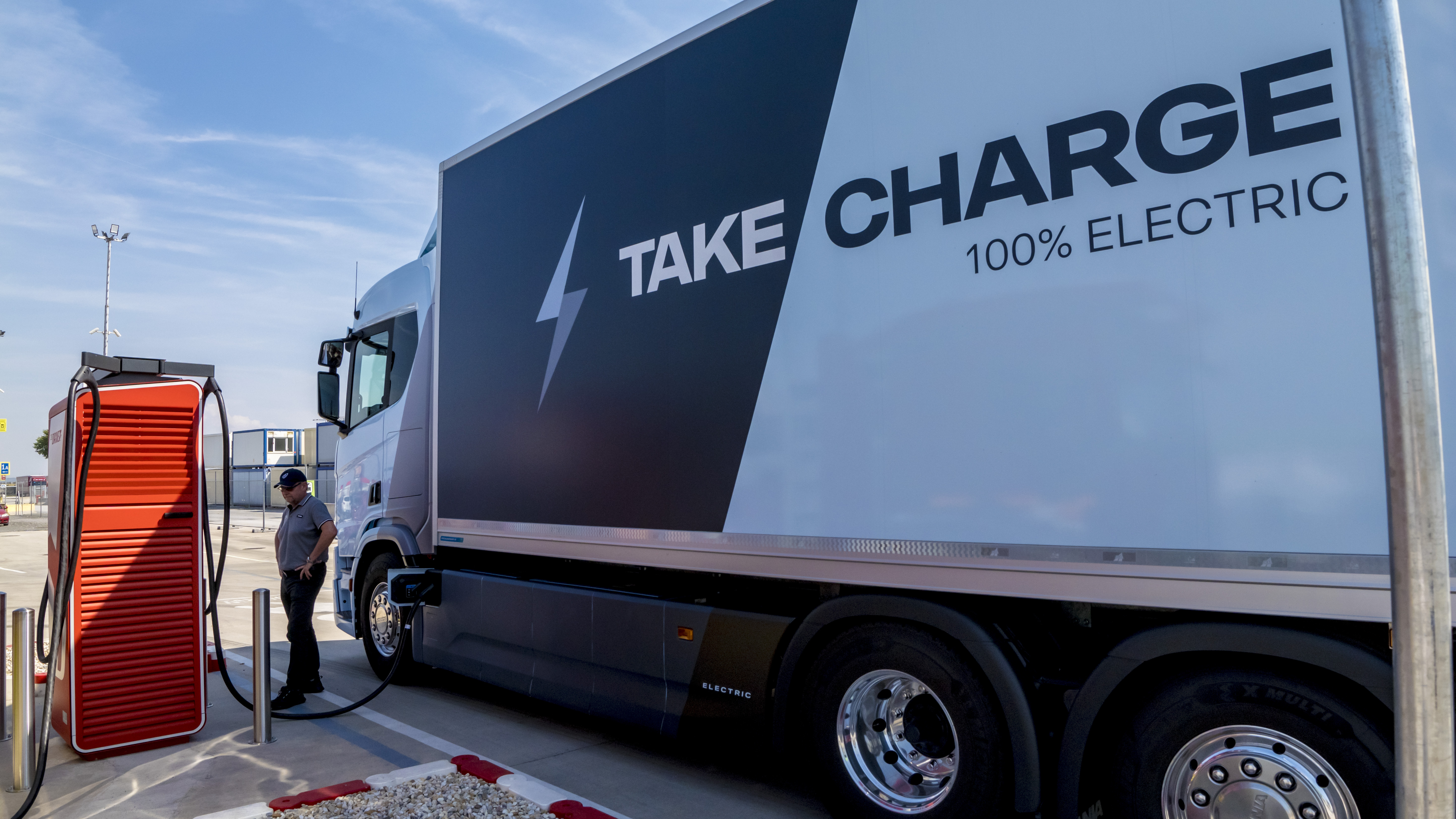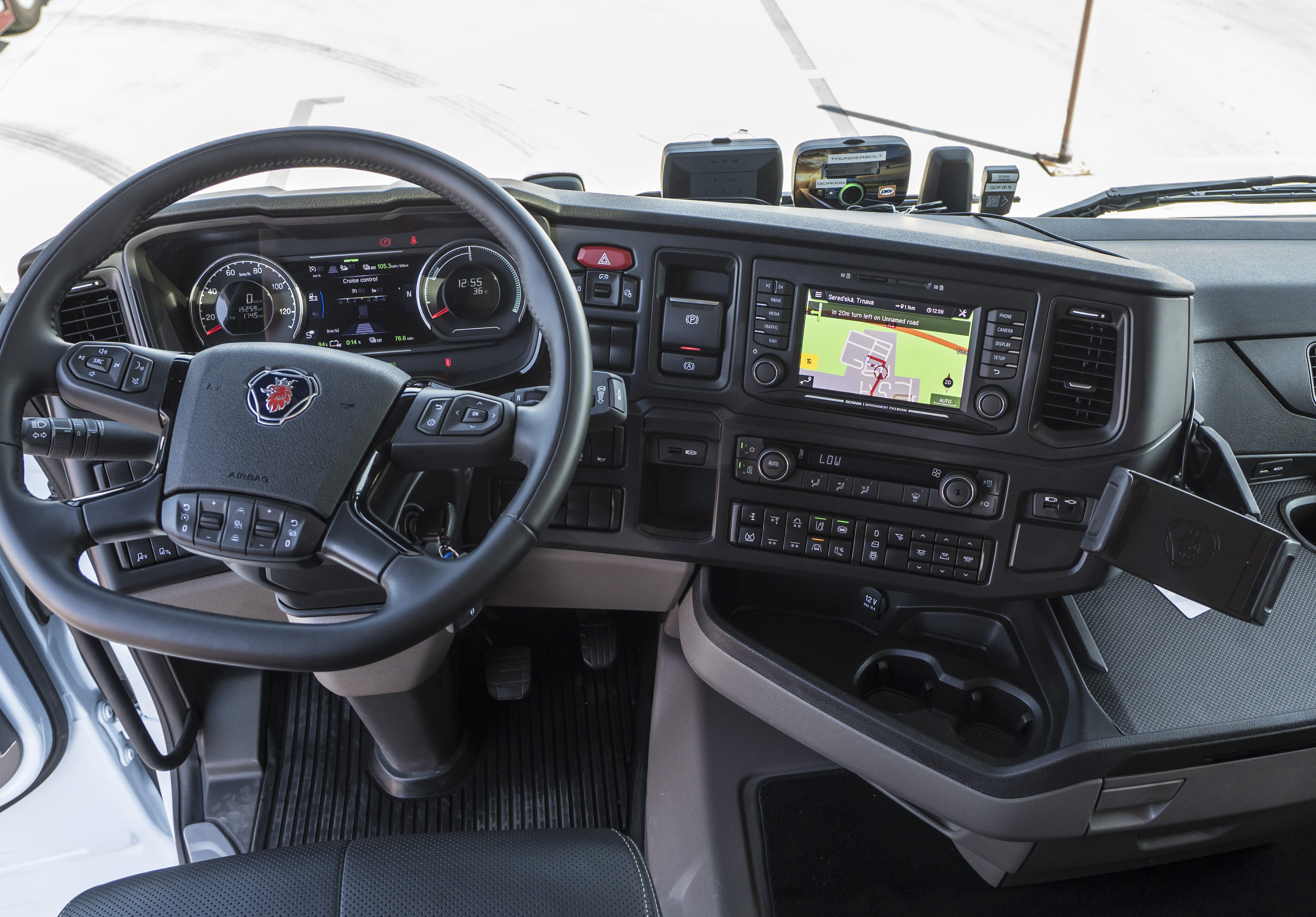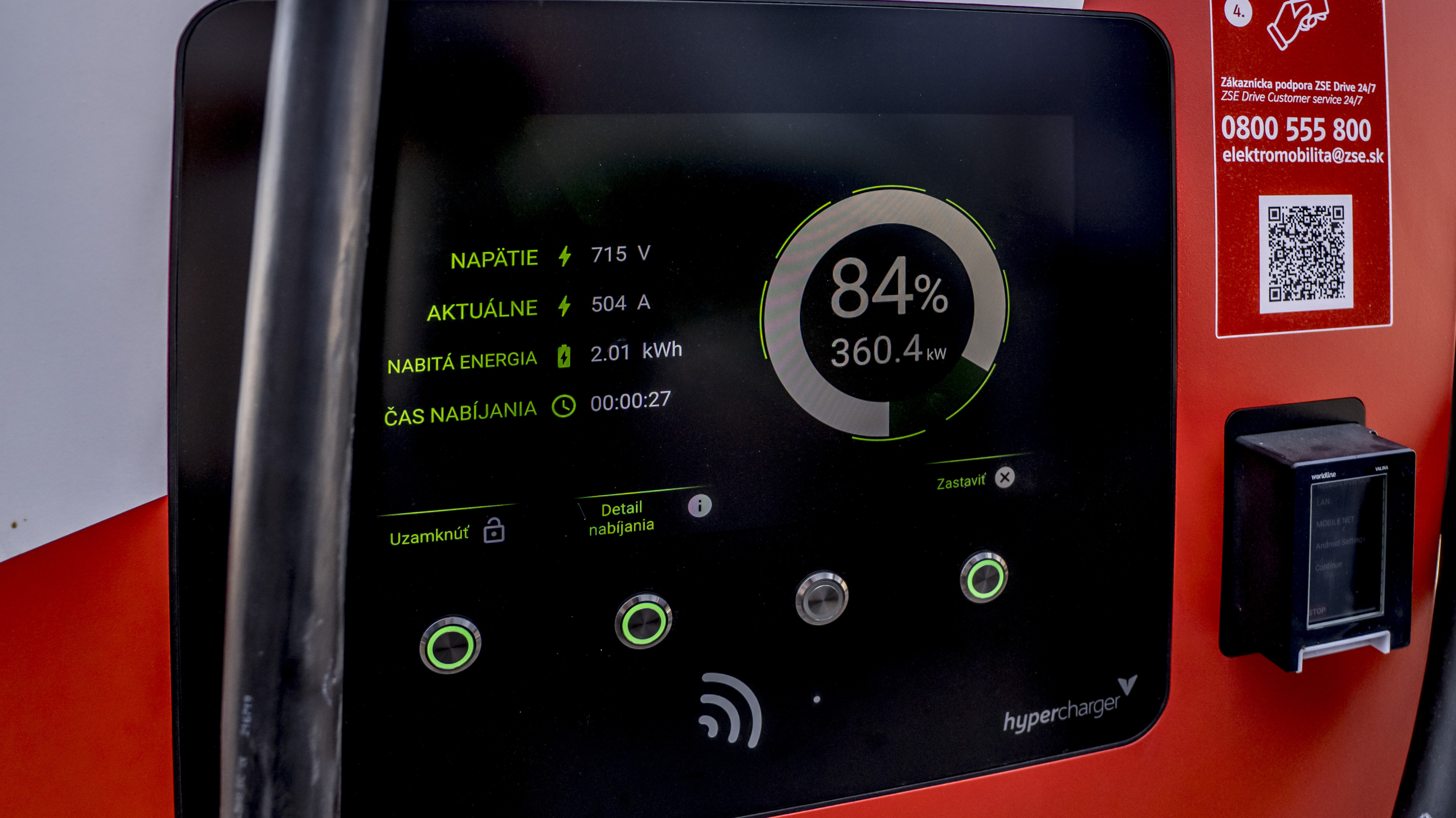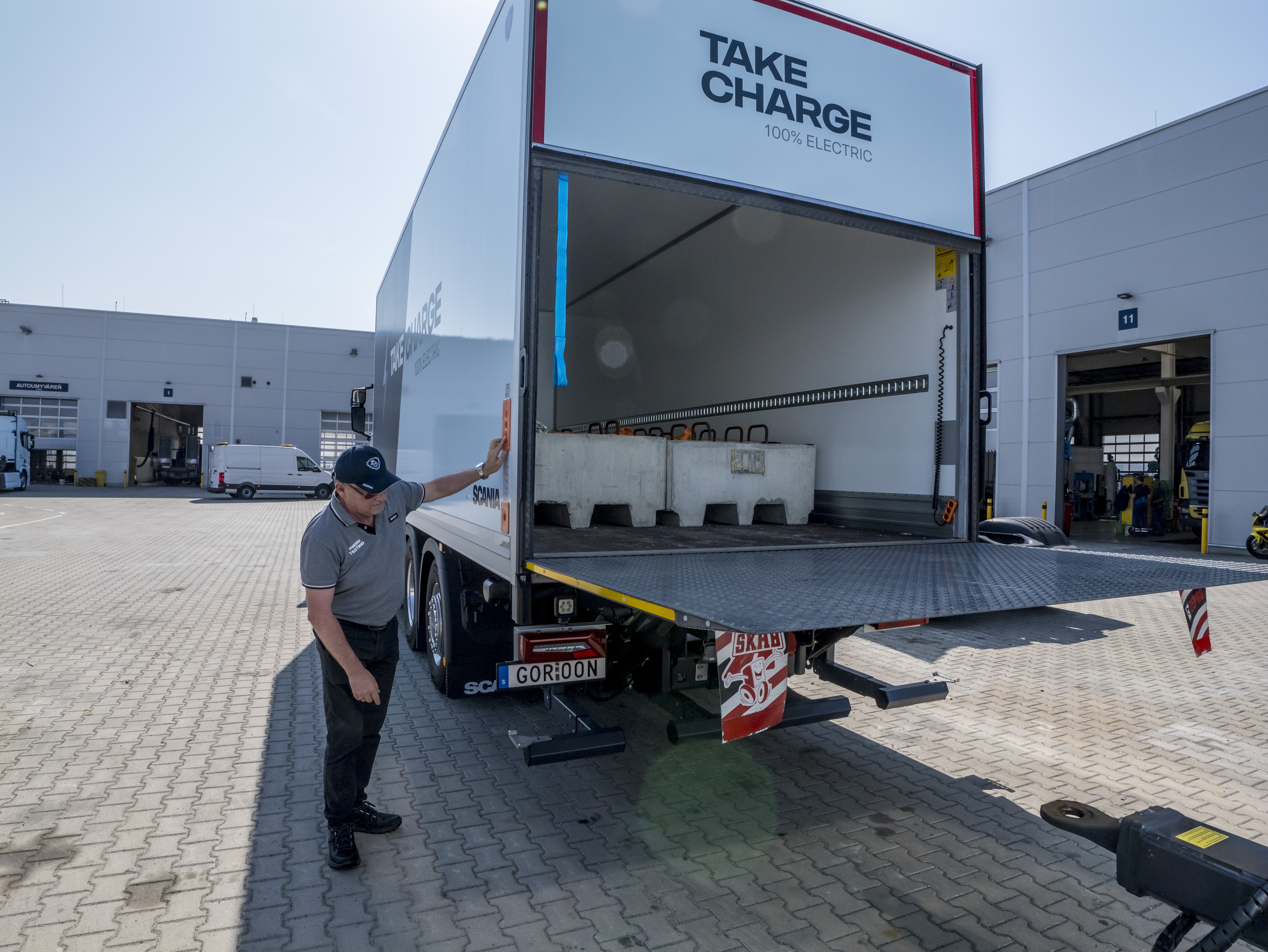If we want to talk about the decarbonization of transport and the introduction of electric cars and other alternative drives, it would be a bit naive to think that only passenger cars will save it. Today, road transport makes up the largest share of all land transport of goods, and we must not forget about special trucks used in agriculture, construction, municipal services and other service services, and, of course, buses. If we forget the long-distance transportation of goods, the vast majority of such cars are used regionally, or provide regional transportation. It is therefore a logical conclusion that after passenger cars, electrification also reaches trucks, buses and various special vehicles.
This time I had the opportunity to test the Scania 40 R electric truck, intended for regional transport. The latter can be an interesting choice for transport companies that want to reduce their impact on the environment and at the same time optimize operating costs. We had the vehicle available as a semi-trailer tractor and with a box superstructure with the possibility of towing a two-axle trailer. Both tractors were in a 6×2*4NB chassis configuration, i.e. three-axle with a driven second axle. The model can also be configured as a 4×2 tractor with a driven rear axle. Given that my qualifications only allow me to drive a separate vehicle, the choice fell on the box version 40 R. From its designation, one can read the power of 400 kW and the R-type cab, which also allows the driver to stay overnight.

With such a box body construction, the vehicle is ready for a wide range of tasks and operations. The drive system uses a Scania EM C3-6 drive unit with a permanent power of 400 kW (a version with a power of 450 kW is also available), fitted with three parallel working electric motors with a fully automatic 6-speed gearbox. The fifth stage connects the motors directly 1:1. While the performance does not seem overwhelming in the world of electric cars, the system achieves a torque of up to 2800 Nm. Thanks to this, the total technical weight of the set (GTW) is up to 64 tons. I drove with a pair of concrete blocks with a total weight of 25.5 tons. The modular battery from the workshop of the Swedish company Northvolt, composed in our case of 6 blocks, has a capacity of 624 kWh, while the usable energy is set to 75%. SOC can be optionally windowed to 85%, which increases range (but wears more on batteries). The vehicle uses only DC charging with a power of up to 375 kW, which is a big competitive advantage. A lot of the competition puts only relatively slow charging in trucks with a power of up to 200 kW, which allows the battery to be charged in up to 3 hours or more. It is in the case of regional use that the need for extra driving may arise. Scania with a charging power of up to 375 kW via the standard CCS connector allows the batteries to be fully charged in approximately 85 minutes. In practice, this means that you can get a range of up to 270 km in one hour of charging. This fast charging time is thanks to the sophisticated battery temperature management system, which ensures optimal cooling and heating of the batteries and keeps them at around 25°C most of the time. As a result, the vehicle offers more range than officially stated, as the charge management system in practice allows it to run for more hours (thanks to short and efficient charging breaks) than many competitors who claim better range. Battery capacity is one thing, but what really counts is how much you can drive in a day, week or month.

And how do you drive an electric truck? The first surprise for me was the high-tech equipment and a number of assistance systems, including adaptive cruise control or a lane keeping system. This is very useful especially when driving on the highway, where it comfortably keeps you in the middle of the lane. Unlike a car with the width of a truck, you are pretty tight in that lane. Considering that I don’t normally drive such big cars, it was the width of the car that was the biggest challenge during the first kilometers through the districts. Fortunately, the vehicle has lovely large rear-view mirrors where you can constantly check where you are in the lane. It is interesting that the adaptive cruise control has separate control when driving downhill and during normal driving. Of course, it also works automatically with the regenerative brake, which has a power of up to 600 kW, with which it charges the battery during braking. When driving on more winding roads, the manual recuperation control comes in handy, which is located on the large lever under the steering wheel, that is, where drivers are used to controlling the engine brake. The recuperation is controlled in stages, but unlike 3-4 stages in personal electric cars, there are about 15-20 of them here, I didn’t count it exactly. However, the braking effect can be managed nicely thanks to this.
The vehicle is equipped with an air chassis, which allows its height adjustment to be changed in a relatively wide range, even along the axles, so that, for example, the vehicle can be leveled when loading. An automatic system for attaching a trailer is located at the back. The driver activates it before reversing to open the coupling ball, and it automatically locks after reversing. The driver can see the load on each axle on the display, as well as the entire set, including the trailer or semi-trailer. The chassis perfectly absorbs all bumps and the vehicle seems to float on the road. This feeling is further enhanced by the suspension of the cabin and the pneumatically cushioned seat. It has about twice as many different settings as compared to seats in luxury limousines, and the comfort of sitting cannot actually be compared with any passenger car. Given that the driver spends long hours here, this is also understandable. Of course, you can feel the pull of the engine, but don’t expect a comparison with a passenger car. After all, you can’t afford a race with loaded goods. From this point of view, the driver must be able to anticipate and smoothly recover. Even though the brakes seem weak during normal driving, during the critical braking test, I was convinced that they were able to engage properly and the vehicle stopped after a few meters.
During the drive, after just a few meters, you will notice the incredible silence in the cabin. Although I’m used to it from passenger electric cars, it’s simply different in a truck. Here you expect noise and vibrations, but none of that happens here. For the driver, this is perhaps one of the most important things, and the working environment here is more like a living room, even the bed is behind the back. The drivetrain is very smooth, and if I hadn’t known the car had a 6-speed automatic, I would have been hard pressed to guess. Since our weight was “only” 25 tons, apparently the automatic did not even use all the stages. The range of the car is also quite interesting. When fully charged in our configuration, it showed up to 470 km, which, according to information from the factory driver, could realistically be achieved. Finally, according to the data of the on-board computer, the car’s long-term consumption is around 130 kWh/100 km, which is an interesting figure in this category. During testing, we drove 205 km with a consumption of 109 kWh/100 km, while the route had large ups and downs and about 40% was highway. The on-board navigation also has electrical intelligence, so it also shows recommended charging points to the driver after entering the route.

During testing, I was also curious about charging the vehicle. We therefore went to Empark in Trnava to the 400 kW ZSE Drive charger designed for trucks, the only one in Slovakia so far. Of course, thanks to the standard CCS connector, the vehicle can be charged on any DC charger, but those for trucks are positioned so that a truck can also fit there. We arrived at the charger with the battery at 84% SOC. However, Scania has an excellent charging curve, so that even in this condition the battery was charged with a maximum power of 360 kW, initially up to 375 kW, and at 92% SOC the charging dropped to a still excellent 140 kW.

All in all, the Scania 40 R test was a very interesting experience. The vehicle drives excellently and has top-notch technological equipment. In addition, the drive system, including the charging speed, is set for use with a high load, so that the efficiency of operation and the load of the vehicle can be used as best as possible. Thanks to this, the vehicle is more worthwhile from an economic point of view, despite its higher price.
Technical data:
CR20N cab, dimensions: length 10,500 mm, width 2,600 mm, height 4,000 mm, technical gross weight (GTW) 64,000 kg, color glacier white, cab suspension air comfort, electric engine Scania EM C3-6, electric engine power 400 kW (540hp), engine brake 600kW, battery capacity 600kWh, battery SOC window 83%, CCS2 DC charging up to 375kW (350kW average), GE281 gearbox, 6-speed, Scania R780 rear axle with single reduction, ratio of the rear axle 3.42:1, front tires 385/65 R22.5, rear tires 315/70 R22.5, tires behind the driven axle 385/55 R22.5, front axle two-wave air, 9000 kg, rear axle two-wave air, 11,500 kg, steering type spherical ball, hydraulically assisted, steering wheel adjustment: 0 – 50° tilt, 85 mm shift, number of steering wheel turns at maximum steering angle 2.2 – 2.4, Scania F950 frame, wheelbase 4750 mm, options : Scania EAS (electrical active steering), instrument panel, high infotainment system, Premium
Source: www.nextech.sk


